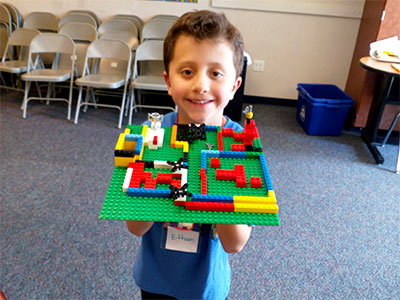This week, Early Engineers took a look at the science behind some of our favorite video games with this awesome LEGO build!
Note how part of the image above left is blurred, while part is in focus. This simple image demonstrates the effect of refresh rates in making a smooth-running video game in the real world. Refresh rate is the rate at which a monitor’s display is updated. Higher refresh rates make videos more smooth. When the refresh rate is low, the video can take on a stop motion effect. In video games, a low refresh rate means that it’s harder to respond to enemies, since they won’t appear until the screen updates. For modern games, which are very fast paced, the refresh rate can make or break a game.
Our bold builders also learned about compilers. A compiler converts data from one programming language to another: this conversion allows different software and computers to respond to one another, though they may “speak” in different ways. Computers operate almost exclusively using 1’s and 0’s. Converting all instructions into these 1’s and 0’s is necessary in order for a computer to understand something. This is what a compiler does.
After learning about these real world science facts about computer science and video games, our engineers were challenged to design a video game layout of their own on LEGO base-plates! Our builders had a great time assembling these intricate arcade mazes: we saw all kinds of levels, characters, and designs for imaginative video games. Perhaps one day our engineers will design such games of their own!
We hope your engineer enjoyed this exploration of LEGO video game excitement: join us again next week, where we'll use solar power to make an exciting new build!






